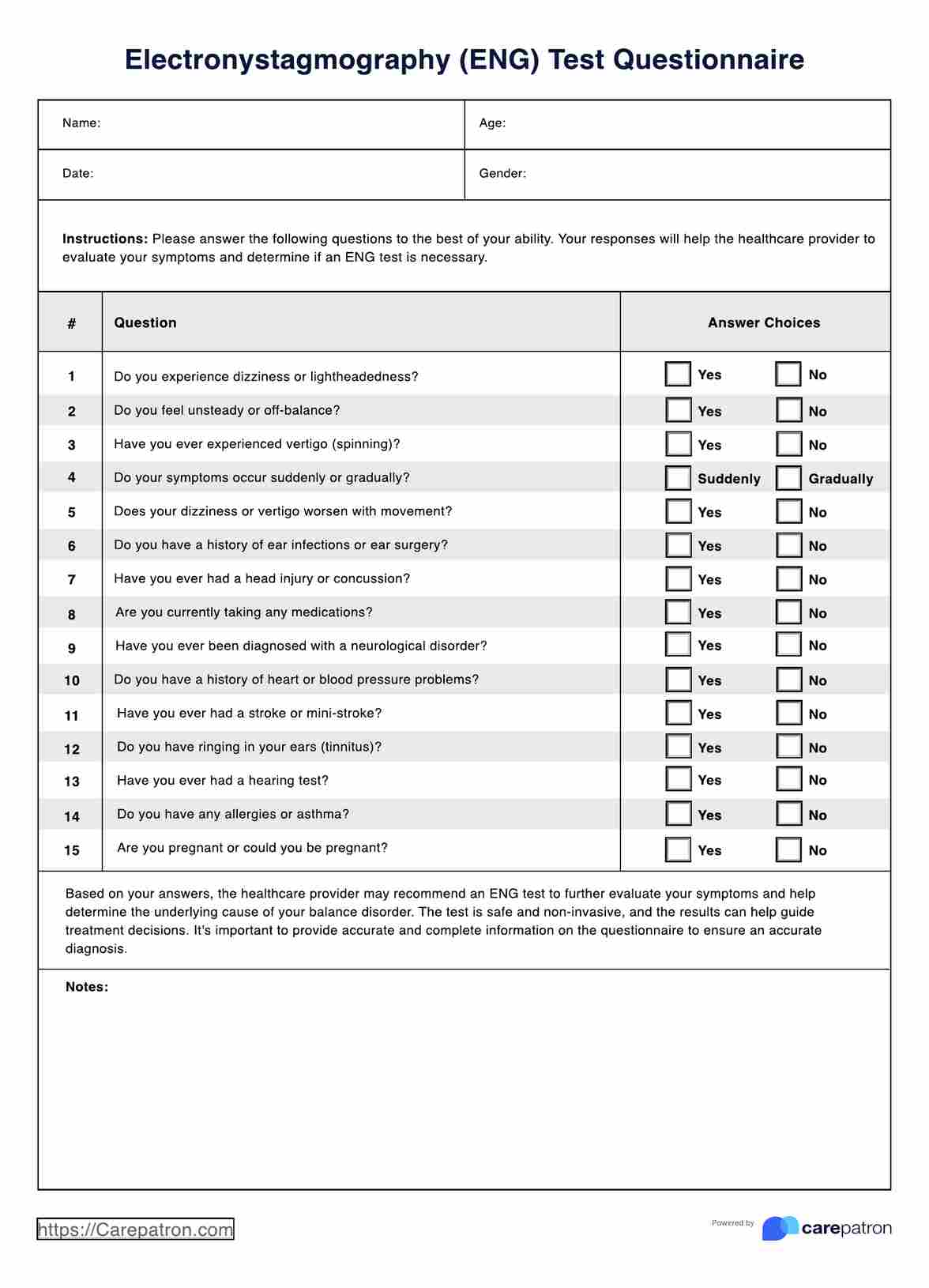ENG tests are conducted in a healthcare provider's office or clinic. Small electrodes are placed around the patient's eyes to measure eye movements, and the patient's head and body are placed in various positions to trigger nystagmus. The test is safe and non-invasive.

Electronystagmography
Download a free Electronystagmography (ENG) Test example in PDF format. Learn what an ENG test is, how to conduct it, and its benefits.
Use Template
Electronystagmography Template
Commonly asked questions
The ENG measures a patient's involuntary eye movements, or nystagmus, in response to different head and body positions and stimuli. It can help diagnose vestibular disorders like BPPV, Meniere's disease, and vestibular neuritis.
The purpose of the ENG test is to evaluate the patient's balance and vestibular function. It helps diagnose and differentiate between various vestibular disorders, which can then guide treatment decisions.
EHR and practice management software
Get started for free
*No credit card required
Free
$0/usd
Unlimited clients
Telehealth
1GB of storage
Client portal text
Automated billing and online payments











